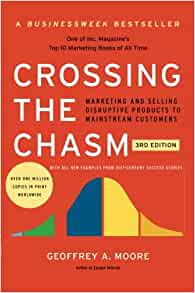By Bradford F. Spencer
Geoffrey Moore, well known for his marketing prowess and author of the tremendously popular Crossing the Chasm, shares some useful constructs for redefining and expanding on the concept of Core vs. Context activities in an organization in one of his follow-up works, Living on the Fault Line.
According to Geoffrey’s definition, a Core activity is one that will directly enhance shareholder value. He believes that these activities and the departments that house them differ by industry and strategy. For example, if you are at Microsoft, the core activities are limited to software development and marketing. if you are at MetLife, the core activities are product development (including actuarial), sales, and investing. If you are the Process Control Group at Emerson Electric, the core functions are engineering and sales. Meanwhile, at General Motors, they are design, manufacturing, and marketing. The implications are far-reaching — including what key functions one must master in order to be promoted to an executive role.
The non-core or “context” activities are often Mission Critical, but do not create the key and sustainable competitive advantages. No one would argue that Microsoft needs a world-class legal department as well as the ability to identify and recruit the best talent to maintain their success, but these activities are not the key variables impacting their long-term success in the market and so, by definition, they are Context activities.
When you think about it, when a company is just starting out and there are 12 employees, there is a very real probability that 80% of everyone’s time is spent on core issues. When it becomes 12,000 employees with large accounting, public relations, human resources, facilities, and other departments, which have somehow become invaluable, it seems as though 80% of the employees’ efforts are spent on Context.
Our experience is that it is more difficult to stimulate employees to work on issues that are not as important to the business. Thus, keeping a highly-stimulated and involved workforce when they are not directly involved in the core business becomes increasingly difficult. The more obvious the tie between the activities and the outcomes, the more easily one is motivated by the macro goals.
The implications for outsourcing to a company whose core is your context are profound. The rise of ADP and other specialized services, such as payroll, is fallout from the trend. Most companies realize that no matter how good they get at doing payroll (unless it is their product) it will not make a difference in their stock value. For that reason a whole series of companies have grown up whose narrow expertise is everything from leadership development (yes, we have benefited from this trend) to janitorial services. The hidden costs of having to spend time on the context functions are devastating and the benefits questionable. Think about how much time you spent in the last staff meeting discussing the 401k plan vs. meeting a customer need. This is why the seemingly increased costs of outsourcing the IT function are almost always a net savings.
Lastly, Geoffrey addresses the seminal work of Dr. William Schneider on Culture and agrees with his conclusion that, while culture follows strategy, the departments doing core work must have the dominant culture (not a subculture) as their operating premise. This has day-to-day implications for the structure and management approaches.
Thus, while context is critical to grow and succeed, those who ignore it do so at their peril. However, spending your energy and focusing your resources on the Core issues make the critical differences. What is on your calendar for the next hour?
Moore, G.A. Living on The Fault Line. New York: HarperCollins, 2000
Schneider, W.E. The Reengineering Alternative: A Plan for Making Your Current Culture Work. Burr Ridge, IL: Richard D. Irwin, Inc., 1994


